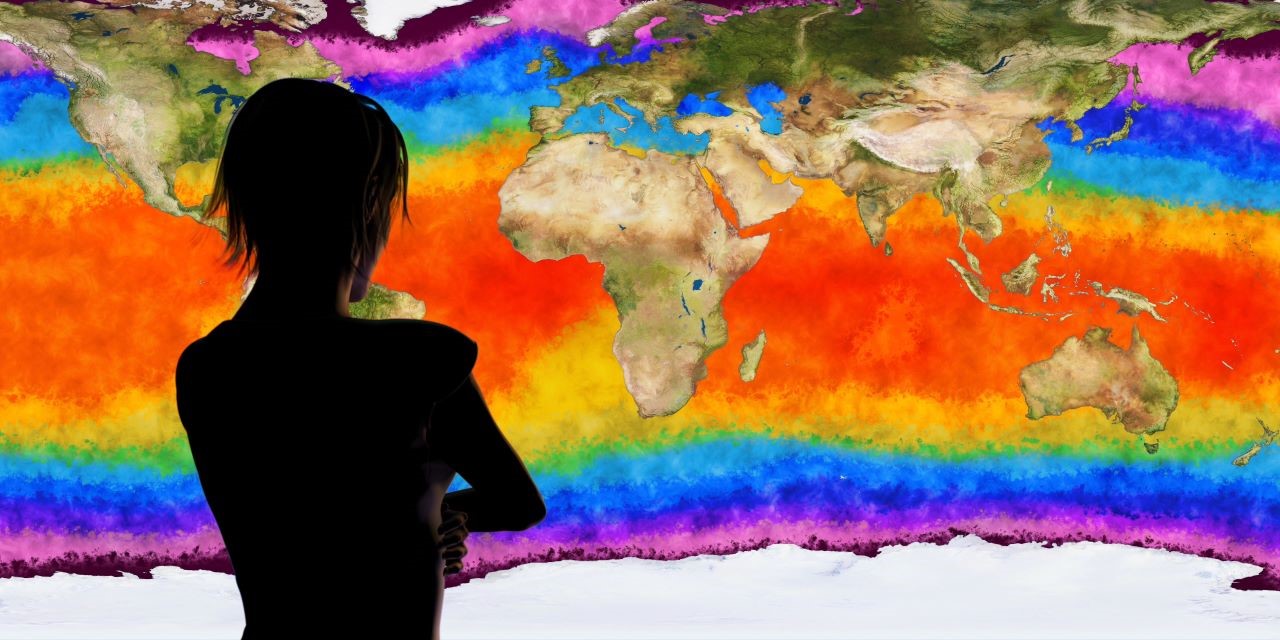Climate Change and Conflict By Tobias Ide | 29 August, 2023
Gendering the Climate-Conflict Nexus

Image: boscorelli/shutterstock.com
The security implications of climate change have been high up on the political agenda for several years now. The UN Security Council, for instance, discussed the risk associated with sea-level rise in February this year. Likewise, the Women, Peace and Security agenda is a cross-cutting issue for many UN institutions, foreign ministries, donors, and NGOs. Both subject areas are also increasingly well-researched. The role of women in peace and conflict figures prominently in political science research and the recent report of the Intergovernmental Panel on Climate Change (IPCC) discusses climate-related conflict risks in various chapters.
I argue that, so far, debates on climate change and conflict and discussions around women, peace and conflict are largely taking place in separate silos. Rather than acknowledging the numerous intersections of those two topics and enriching each other’s work, there has been little engagement between experts on both issues. Notable exceptions, such as reports by the United Nations and Monash University, are few and far between, and remain strongly focussed on human security.
But even from the limited research and discussion so far, one thing becomes clear: Gender is a key dimension of the climate-conflict nexus.
My recent study, for instance, finds that if rebel groups have a large share of female members, they are more likely to escalate violence after climate-related disasters, and less likely to reduce fighting. This is because women provide additional labour and fighting force. Furthermore, women are often better than men in conducting specialised tasks, such as establishing relations with civilians (on which rebels might depend for support after disasters) or intelligence gathering (which is key in rapidly changing post-disaster contexts). After the 2004 Indian Ocean tsunami, for instance, the Liberation Tigers of Tamil Eelam (LTTE) were able to increase their attacks against the Sri Lankan government, among others because they could rely on many female members to gather intelligence and replace the male fighters who had been killed. While in a comparable situation after the 2010 floods, the Pakistani Tehrik-i-Taliban, who did not allow female members, scaled down their fighting due to a lack of resources and (wo)menpower.
Likewise, in countries like Chad, women play a vital role in building resilience to climate change in their communities and households. Examples include growing additional food in the garden, managing local water resources, or providing medical care after extreme weather events. At the same time, the effects of climate change reduce the capacities of these women, for instance, when they need to take on additional tasks due to male outmigration or walk longer distances to fetch water and firewood. Hence, gender division of labour and climate change impacts reduce women’s efforts to build climate resilience and facilitate local development. Low resilience and strong adverse climate impacts on livelihoods, in turn, could make aggrieved and desperate people more prone to join extremist groups like Boko Haram. Such groups provide an income and (often empty) promises to improve the situation once in power.
But gender is not just a matter of add women to the picture and stir. Gender is about the social norms, expectations, and power relations associated with being a “man” or a “woman”. Cattle raids and the associated violent conflicts between communities are a major security risk in northern Kenya. Climate change is likely to intensify these conflicts due to competition over fertile land, water, and changed pastoralist mobility patterns during droughts. Yet these conflicts are also deeply tied to gender roles. Men are expected to pay a bride price to marry and be considered an adult member of society, with cattle raiding being one opportunity to acquire funds for the bride price. These societies also consider being a successful warrior as an indicator of a man’s attractiveness and ability to care for his family, and women have been reported to mock men refusing to participate in violent cattle raids. Similar dynamics occur among pastoralist communities in Nigeria, South Sudan and Uganda. So, while pastoralist conflicts in these areas are in essence political-economic struggles intensified by climate change, they are also fundamentally driven by gender norms.
More insights, examples, and good practices will emerge as a result of future cooperation between gender experts and climate specialists in the peace and conflict space. For example, both patriarchal gender norms (that limit women’s agency and their access to land, hence increasing their grievances) and extreme climate events (that erode women’s livelihoods) could motivate women to join armed groups. Policies which “just” aim at transforming gender norms or securing livelihoods hence might not be sufficient to limit rebel recruitments unless they are combined and integrated. In order to realise such insights and design appropriate policy responses, scholars and practitioners need to leave the comfort zone of their respective silos and start an integrated conversation on gender, climate, and conflict.
More articles from this author:
Climate change, disasters and armed conflict (3-minute read)
Is climate change a threat to Australian security? (3-minute read)
Tobias Ide is Senior Lecturer in Politics and International Relations at Murdoch University Perth and Adjunct Associate Professor of International Relations at the Brunswick University of Technology. He has published widely on the intersections of the environment, climate change, peace, conflict and security, including in Global Environmental Change, International Affairs, Journal of Peace Research, Nature Climate Change, and World Development. He is also a director of the Environmental Peacebuilding Association.